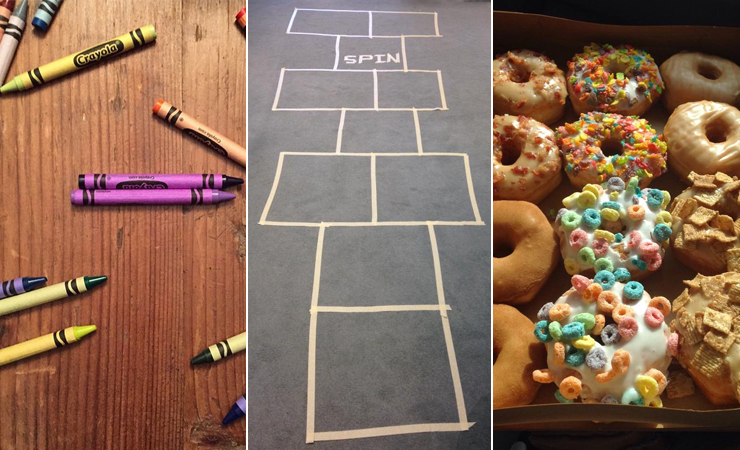Earlier this month, we spent an entire week at Poynter focused on the topic of fun at work. The concept was born out of a conversation during a work trip. It was the kind of idea that seems interesting but would require a lot of work, the type that often gets thrown around and rarely sees follow-through.
But this idea was different. It was something I couldn’t shake.
I worked at CNN for seven years, from 2007 to 2014, and watched morale rise and fall during that time. I listened to seemingly endless complaints from colleagues and did more than my fair share of complaining. I struggled with growing amounts of work and stress. I figured it all came with the territory of working in news.
(It’s worth noting that my experiences at CNN weren’t all negative. Far from it. I learned countless skills and lessons, worked alongside incredibly talented colleagues, was part of a wonderful team, met lifelong mentors and made some of my closest friends there. Besides, CNN is hardly alone among news organizations dealing with the scenarios I described.)
After witnessing company-wide layoffs in October 2014 and seeing the mental toll it took on the “survivors,” I decided I desperately wanted to make things better at CNN and elsewhere. That’s part of the reason I came to Poynter. It’s an idealistic and ambitious goal, yes, but making newsrooms happier places to be was something I wanted to be part of.
This seed of an idea — devoting a week of online learning to fun at work — was one way to move that crazy goal closer to reality.
There was a lot stacked against making Fun at Work Week happen. I was new to Poynter, we didn’t have funding for the project, and the institute was juggling a ton of other priorities at the time.
Enter my co-conspirator, Ren LaForme. Despite the hurdles, the idea took off because the two of us believed wholeheartedly in the idea and could share the workload. When one of us was completely doubting everything (usually me), the other was there to speak calmly and explain why this was worth doing (thanks for that, Ren).
And so a week devoted entirely to the topic of fun at work actually took place. Between Aug. 3 and 7, we hosted four Webinars on topics ranging from the power of play at work to building online communities through fun. We cheered when a news director brought crayons to a weekly meeting and a features team donned superhero T-shirts. We hosted viewing parties and created masking-tape hopscotch within Poynter’s hallowed walls.
Did we effect major change? No. The amount of people who tuned into the Webinars was relatively small. We set some ambitious goals for the week and fell short of most of them. But we did learn some big lessons along the way — some fun and some decidedly not fun.
In the spirit of sharing the workload, LaForme and I tackled this list together:
Fun is a tough sell. Many people are skeptical of fun, especially in work environments. How do you prove that you’re not just goofing off? How does it translate to monetization? We quickly discovered that making the case for fun can be difficult and that there’s plenty of progress to make when it comes to encouraging fun at work in meaningful and lasting ways.
It can be hard work. In part because this was a passion project for us, preparation for the week spilled into the evenings and weekends. We edited presentations well after most lights were out at Poynter, and recorded and re-recorded video all afternoon on a Saturday.
It can also stop feeling like work. One weekend afternoon, after we donated a morning to graphics and social media copy, we pondered over drinks whether it was all worth it. The answer was a clear yes. When you do work you believe in, it’s hugely rewarding. This was a clear takeaway from the week’s teaching: One tried-and-true path to fun is giving employees the autonomy to take on projects they love.
Everything is better with a co-conspirator. It’s nearly impossible to champion an unconventional idea on your own. In other words, every lone nut needs a follower.
Fun needs the right people. The true magic came in the form of our Webinar presenters — three effervescent women who understand the importance of fun at work and practice what they preach. Because Allie Mahler, Karyn Lu and Jennifer Brandel all had faith in the week, it made us put even more effort into making it happen. Finding like-minded people to collaborate with is key to doing good work and having fun in the process.
Fun needs the right space. Earlier this year, we transformed a large section of Poynter’s library into a collaboration space. With a couch, a large table and inviting furnishings, the space has become a hub for staff and guests to work together and share ideas. Poynter employees and visitors gathered in the space to watch each of the Fun at Work Week Webinars. It led to plenty of internal discussions about the topics we covered, which wouldn’t have happened in the past.
At its heart, fun needs the right culture. Culture is the invisible glue that holds an organization together. None of this is possible — the right people, space and opportunities to work on passion projects (in other words, institutionalized permission to have fun) — without a workplace culture that supports it.
Failing doesn’t mean you’re a failure. Throughout the week, the presenters talked about creating an environment that allows for failure, a place where experimentation and innovation can thrive. It’s fitting, then, that we failed to meet a number of our Fun at Work Week goals. When it came to enrollment, revenue and engagement, we missed the mark. Thankfully, we were able to produce work we were proud of, help spread some smart ideas and achieve enough of our initial goals that it was worth the effort in the end.
Success can come in unexpected ways. We came into Fun at Work Week hoping to inspire newsrooms to shake things up a little bit. We never would have guessed that KCUR would bring puzzles to work or turn a boring conference table into a spot to play pingpong. We couldn’t have expected the St. Louis Review would launch Nerf darts at each other or mix up non-alcoholic cocktails. And we didn’t fully anticipate the immense gratification we felt after moving the needle just a little bit toward the good side.
We need this. Newsrooms don’t have a reputation for being the happiest places. We’re convinced that doesn’t have to be the case. Throughout the week, we heard from journalists who were grateful for the week and also from naysayers who didn’t buy into the idea, usually because “fun” didn’t fit into their day-to-day reality and responsibilities. Fair enough. We walked away from Fun at Work Week with an even bigger challenge: How do we prove the value and role of fun to people and places that might be reluctant to embrace it?
With those lessons to guide us, we’re planning to do Fun at Work Week all over again (yes, even in the face of failure). We’re not sure yet what exactly the week will look like and when it will happen, but we’d love to hear your input and ideas as we figure it out. Does this sound like a topic you’d be interested in? Why or why not? What would be most valuable to you and your newsroom? We want to spread the inspiration to as many people and workplaces as possible.
In the meantime, we’ll be gathering allies and articles — and checking in with newsroom needs — to help us reach those ambitious goals. Turns out, fun is a lot harder than it looks.







